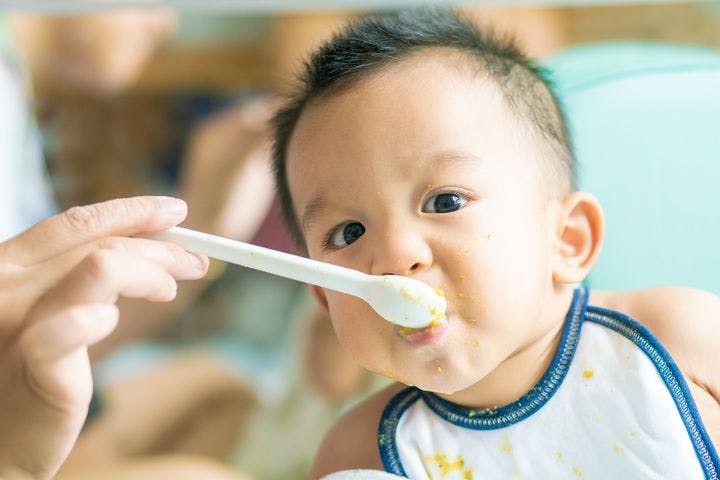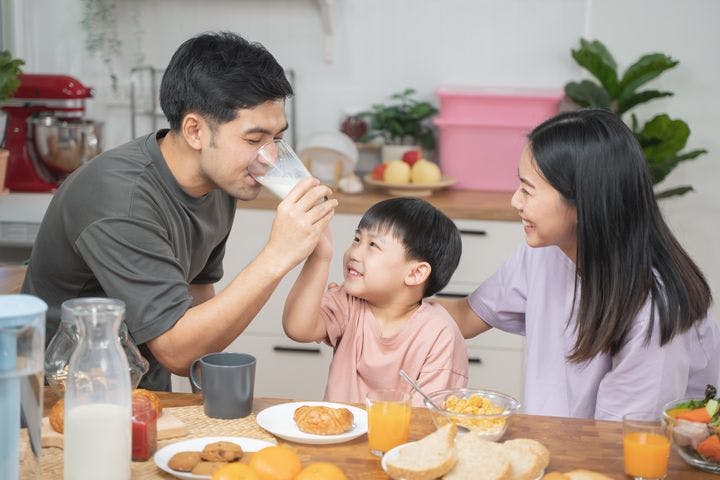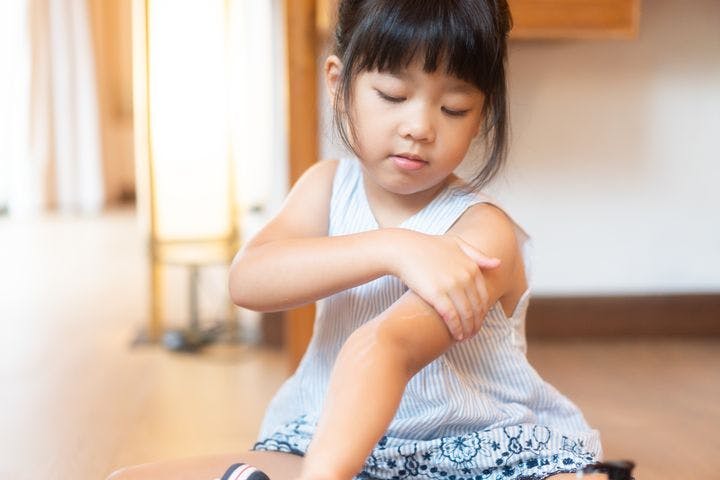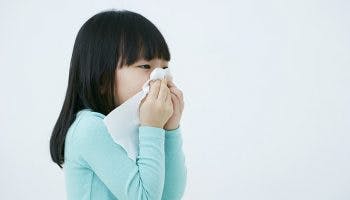6 Ways to Manage Food Allergy Symptoms in Children
Published | 7 min read
Parents, fear not! If your children have food allergy symptoms, this article will give you more information on managing them.

For many parents, looking after a baby or an infant can be a hard, exhausting and confusing task. Now, imagine if your little one suddenly displays food allergy symptoms. What should you do?
Fear not, because this article will provide you with more information. Read on to know about the most common food allergies in babies and children, the symptoms and ways to manage them.
Getting to Know Food Allergies

Did you know that there are more people affected globally by food allergies than cardiovascular diseases and cancer? However, many consider food allergies to be a trivial condition though food allergy symptoms can be potentially as fatal. It’s why the World Health Organization (WHO) recognises food allergy to be a chronic disease.
In 2011, it was reported that, globally, there were 220 to 250 million people with food allergies. In Malaysia, 10% to 15% of children suffer from food allergy symptoms.
Causes of Food Allergies in Children
These are some causes of food allergies:
An immune system disorder
In affected people, their immune systems mistake the proteins in food as a threat. This sets off the release of several chemicals, which prompt an allergic reaction. Since the immune systems of young children are still underdeveloped, it’s easier for them to resist substances and develop food allergies.
Parents with food allergies
Following studies on twins, it has been discovered that food allergies are heritable. In a 2017 study published in Nature Communications, researchers in Germany found that the SERPINB gene cluster contained the genes responsible for food allergies.
Traditional Chinese Medicine’s view on food allergy symptoms
Traditional Chinese Medicine (TCM) categorises certain foods as “stimulating foods”. These can further compromise a body with a weak immune system.
“This is based on TCM ideology that sufficient healthy qi means pathogens are less likely to invade the body with a strong immune system and vice versa,” explains Real Medical Chief TCM Physician Chu I Ta. Echoing this explanation, TCM Physician Vong U Chan says that when qi in the digestive organs is low, the body is unable to process foods optimally.
The Lungs, Kidneys, stomach, and Spleen are critical to a robust digestive system and immune defence. Pathogenic factors are certain foods that stimulate Wind, Cold, Dryness, Dampness, and Heat.
“For example, today’s lifestyle which favours rich and heavy foods results in excess phlegm and Dampness. Also, spending more time indoors and moving less results in weakness of the Lungs and Kidneys. That can trap phlegm and Dampness inside the body,” Physician Chu explains.
“Food allergies in TCM are linked to Wind and Heat syndromes. However, excess Fire in the body invigorates Wind, leading to skin allergies like redness, patches, and hives. These usually happen as a reaction to consuming spicy foods, seafood, and foods high in animal protein.”
Common Food Allergies in Children
Food allergies are typically more prevalent in children under three years old. Although food additives can trigger a reaction in a few children, often, it’s natural foods that can cause allergies.
These foods are:
- Cow’s milk
- Eggs
- Gluten (wheat, barley, rye)
- Nuts and peanuts
- Seeds
- Soya
- Shellfish
- Fish
In 2019, a team of researchers in Malaysia investigated the most common food allergies in 250 children. Results showed that 20.8% were allergic to seafood, while another 12% were allergic to nuts. One percent of respondents were allergic to chicken and a combination of meat and milk, while 0.8% were allergic to eggs and soybean. Children usually outgrow their allergies to milk, eggs, soya, and wheat but a peanut allergy is often long-lasting.
Additionally, the rest of the study’s participants had allergies to multiple foods. The study concluded that if a child is allergic to one food, they’re most likely to react to other foods. It also found that a small percentage of the children were allergic to fruits like watermelon and rambutan.
Food Allergy Symptoms in Children

The following allergic reactions can appear within a few minutes after exposure to trigger foods:
- Sneezing
- A runny or blocked nose
- Red, itchy, watery eyes
- Wheezing and coughing
- A red, itchy rash
- Itchy mouth, throat or ears
- Swelling of the face
- Vomiting
- Most children with food allergies have eczema. Symptoms worsen when they come in contact with an allergen
How to Prevent Food Allergy Symptoms in Children
Severe reactions are rare, but in some cases, food allergies can lead to anaphylaxis. This condition causes the immune system to release a flood of chemicals that can make the body go into shock. Blood pressure drops suddenly, and airways narrow, blocking breathing. A life-threatening condition, anaphylaxis can cause symptoms that include breathing difficulties, trouble swallowing or speaking, and dizziness.
To avoid unwanted outcomes, it’s better to take extra measures to protect your child from food allergies. Here are some ways to prevent food allergy symptoms:
Breastfeed your baby
It’s vital to exclusively breastfeed your baby in the first six months of their life. Breast milk provides infants with essential nutrients and protection against infections and food allergies.
Gradually introduce a variety of foods
After six months, start familiarising your child with solid ingredients, especially the ones that commonly cause food allergies. Begin with very small amounts and slowly increase them if they don’t show allergic reactions after a day. If your baby already has eczema or if you have a family history of food allergies, be very mindful when introducing foods.
Avoid allergens
The surest way to not get allergic reactions is to avoid the foods that give your child symptoms. Consult with your doctor to find other ingredients that would best replace the foods they’re allergic to. Keep a food diary listing the foods you’ve fed your child so you can track if anything gives them a reaction.
Cook your child’s meals as often as you can
When you eat out, you never know what ingredients are in your child’s meals. Try preparing meals at home to ensure no allergens are in the food your child consumes.
Take probiotic supplements
Probiotics can help feed your child’s friendly gut bacteria, whose functions include boosting the immune system.
Consume natural herbs
Another option to try decreasing food allergies in children is herbs.
In TCM, food allergies are linked to insufficient qi in the digestive organs, causing the body to be unable to process foods optimally. Therefore, TCM’s remedies to food allergies revolve around ingredients that can strengthen said organs, namely the Lungs, Kidneys, stomach and Spleen. These natural herbs include astragalus (huang qi, 黄芪) and ginseng (ren shen, 人参). Lingzhi mushroom (灵芝) can strengthen the immune system and restore balance in the digestive system.
Additionally, taking ginseng chicken soup can help strengthen immunity and fight fatigue. Tea in the form of Ganoderma-Perilla tea with Ganoderma Lingzhi (灵芝), perilla leaf (su ye, 苏叶), and poria mushroom (fu ling, 茯苓) helps expel Cold and Wind in the body. It can also prevent cold and flu.
Physician Chu recommends that children take half the dosage an adult would usually take but do ensure to check with a licensed TCM physician before giving your child any of the above remedies. This is to ensure an accurate prescription and dosage according to your child’s specific allergy and body constitution.
It’s normal to feel worried and anxious if your child suffers from food allergy symptoms. The important thing is to be informed as much as possible and to consult your doctor or TCM physician should any complications arise in your child. It’s possible to manage their condition safely.
This is an adaptation of an article, “婴幼儿食物过敏知多少?”, which first appeared on the Health123 website.
References
- Research Gate. 2019. Revelation of Children and Adult’s Food Allergen in Malaysia. [Accessed on 28 August 2022]
- National Health Service. 2008. Food Allergy. [Accessed on 28 August 2022]
- National Health Service. 2020. Food Allergies in Babies and Young Children. [Accessed on 28 August 2022]
- Science Daily. 2017. Genetic causes of children’s food allergies. [Accessed on 28 August 2022]
- Traditional Chinese Medicine World Foundation. 2017. The Skinny on Food Allergies [Accessed 21 September 2022]
- Taoofwellness.com. Food Allergies and Chinese Medicine. [Accessed 21 September 2022]
- Chinese Herbal Therapy for the Treatment of Food Allergy. [Accessed 21 September 2022]
Share this article on






